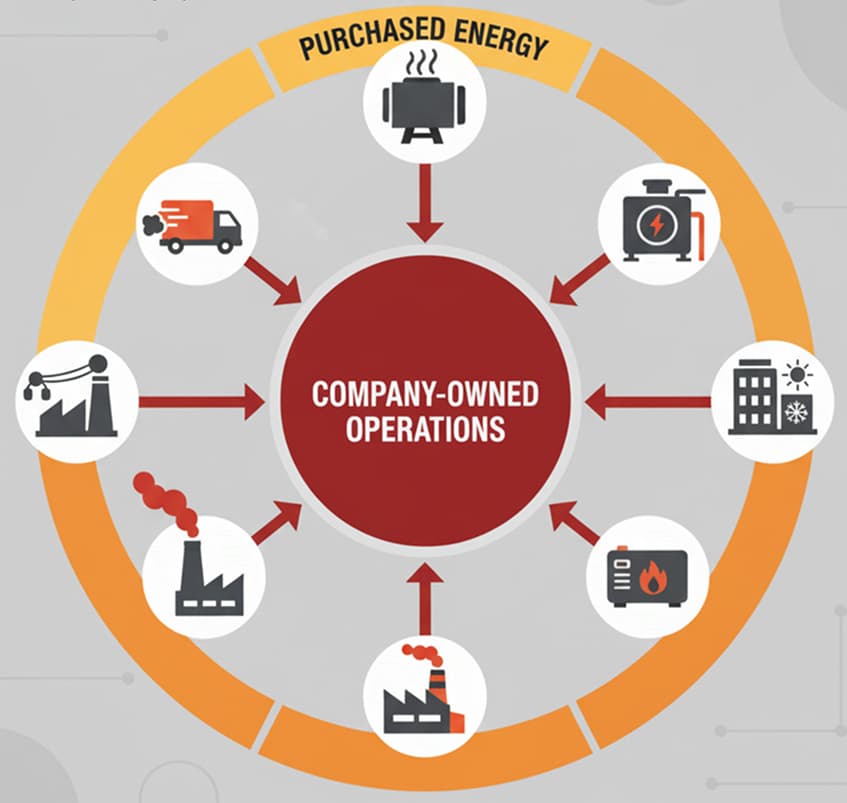Industry-Specific Scope 2 Guidance

Understanding Scope 2 Emissions Across Industries
Scope 2 emissions represent indirect greenhouse gas emissions from the consumption of purchased electricity, heat, or steam. While the fundamental definition remains consistent across sectors, the challenges, opportunities, and strategies for managing these emissions vary significantly by industry.
Why Industry-Specific Approaches Matter
Different industries face unique operational requirements, regulatory environments, and technological constraints that shape their approach to Scope 2 emissions management. A manufacturing facility operates under vastly different energy demand patterns than a data center, while office buildings have distinct consumption profiles compared to technology companies. Understanding these nuances is critical for developing effective decarbonization strategies.
Key Factors That Vary by Industry
Energy Intensity: Industries differ dramatically in their energy consumption per unit of output. Data centers and manufacturing facilities are typically energy-intensive operations, while office buildings may have more moderate but consistent consumption patterns.
Load Profiles: The timing and consistency of energy demand varies significantly. Manufacturing may have predictable shifts, data centers require 24/7 reliability, offices follow business hours, and tech companies often have distributed operations across multiple time zones.
Flexibility Potential: Some industries can shift energy consumption to align with renewable energy availability, while others require constant, uninterrupted power supply for critical operations.
Geographic Constraints: Location requirements differ by industry - manufacturing needs proximity to supply chains, data centers seek cool climates and renewable energy access, while offices cluster in urban centers with specific grid characteristics.
Common Scope 2 Reduction Strategies
While implementation varies, several core strategies apply across industries:
-
Renewable Energy Procurement: Including on-site generation, power purchase agreements (PPAs), virtual PPAs, and renewable energy certificates (RECs)
-
Energy Efficiency: Implementing equipment upgrades, process optimization, and smart building technologies to reduce overall consumption
-
Temporal Matching: Aligning energy consumption with periods of high renewable energy availability on the grid
-
Geographic Optimization: Selecting facility locations based on grid carbon intensity and renewable energy access
Regulatory and Market Drivers
Industries face varying regulatory pressures and market incentives for Scope 2 reduction. Science-based targets increasingly require ambitious Scope 2 reductions, with many frameworks calling for 100% renewable electricity by 2030. Market drivers include customer demands, investor expectations, and competitive differentiation through sustainability leadership.
The Path Forward
As grids worldwide continue to decarbonize and renewable energy technologies advance, opportunities for Scope 2 reduction expand across all industries. Success requires understanding industry-specific challenges while leveraging cross-sector best practices and emerging solutions.
Industry-Specific Guidance
Explore detailed Scope 2 strategies and best practices tailored to your industry:
Manufacturing Scope 2 Emissions Management
Discover how industrial facilities are tackling energy-intensive operations through on-site generation, strategic PPAs, and efficiency improvements. Learn about overcoming reliability requirements and capital constraints while achieving science-based targets.
Data Center Scope 2 Optimization
Understand how data centers maintain 99.999% uptime while pursuing 100% renewable energy. Explore PUE optimization, 24/7 renewable matching, cooling innovations, and emerging technologies transforming digital infrastructure sustainability.
Office Building Scope 2 Strategies
Learn how commercial real estate is reducing emissions through green building certifications, smart technologies, and tenant engagement. Navigate the complexities of multi-tenant buildings and hybrid work models while creating value through sustainability.
Tech Companies Achieving Zero Scope 2
See how technology leaders are pioneering corporate renewable energy through large-scale PPAs, 24/7 carbon-free energy, and AI-powered optimization. Understand the strategies enabling rapid growth while achieving net-zero electricity emissions.
